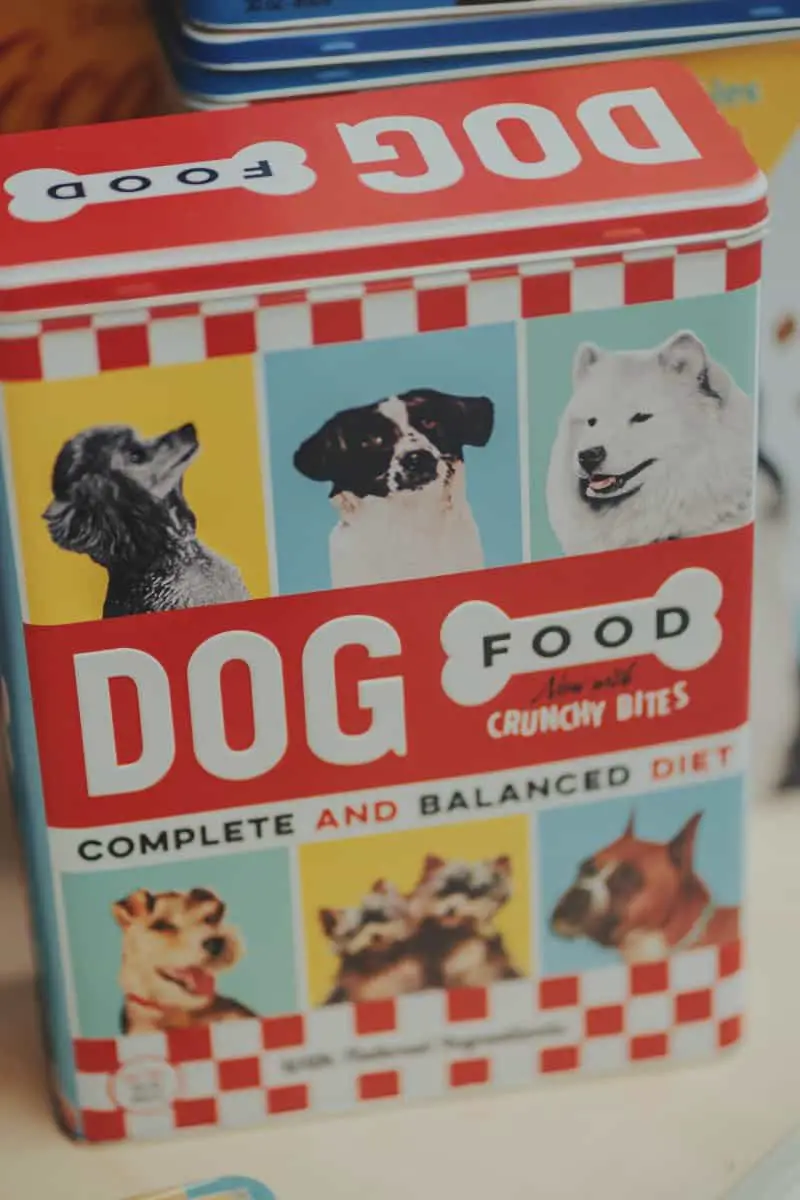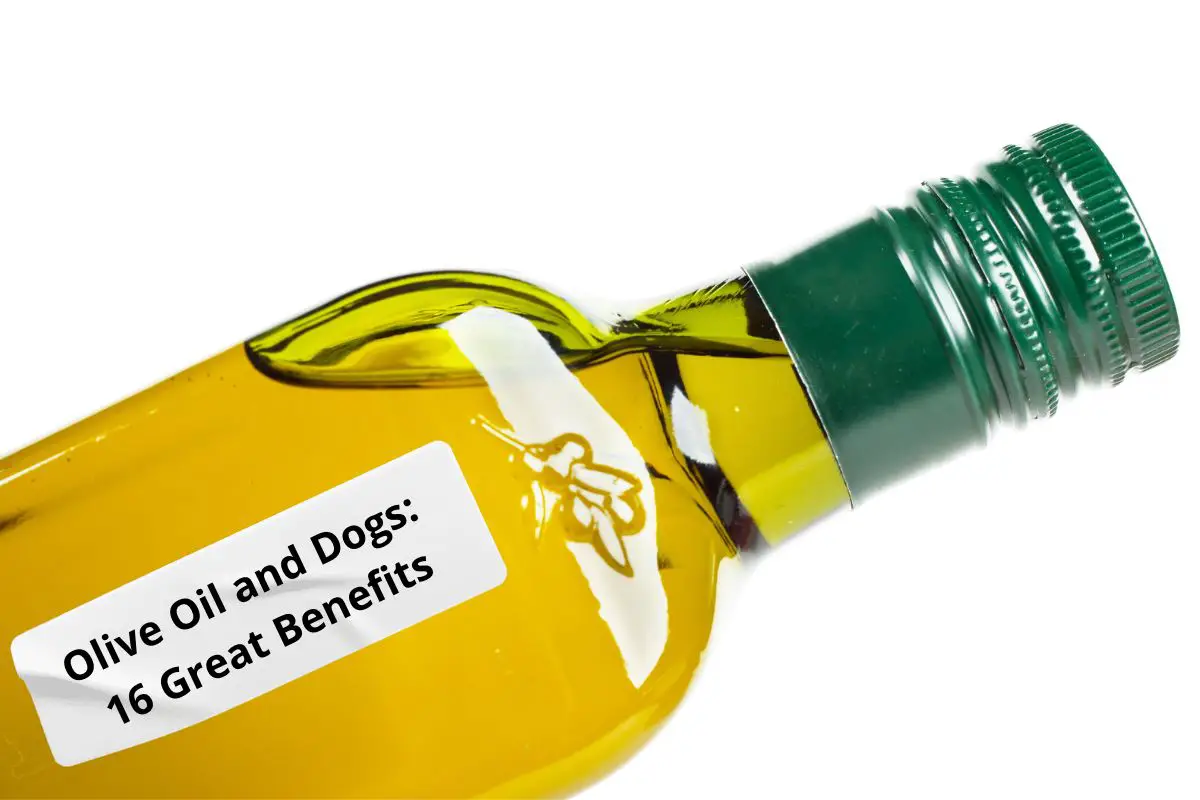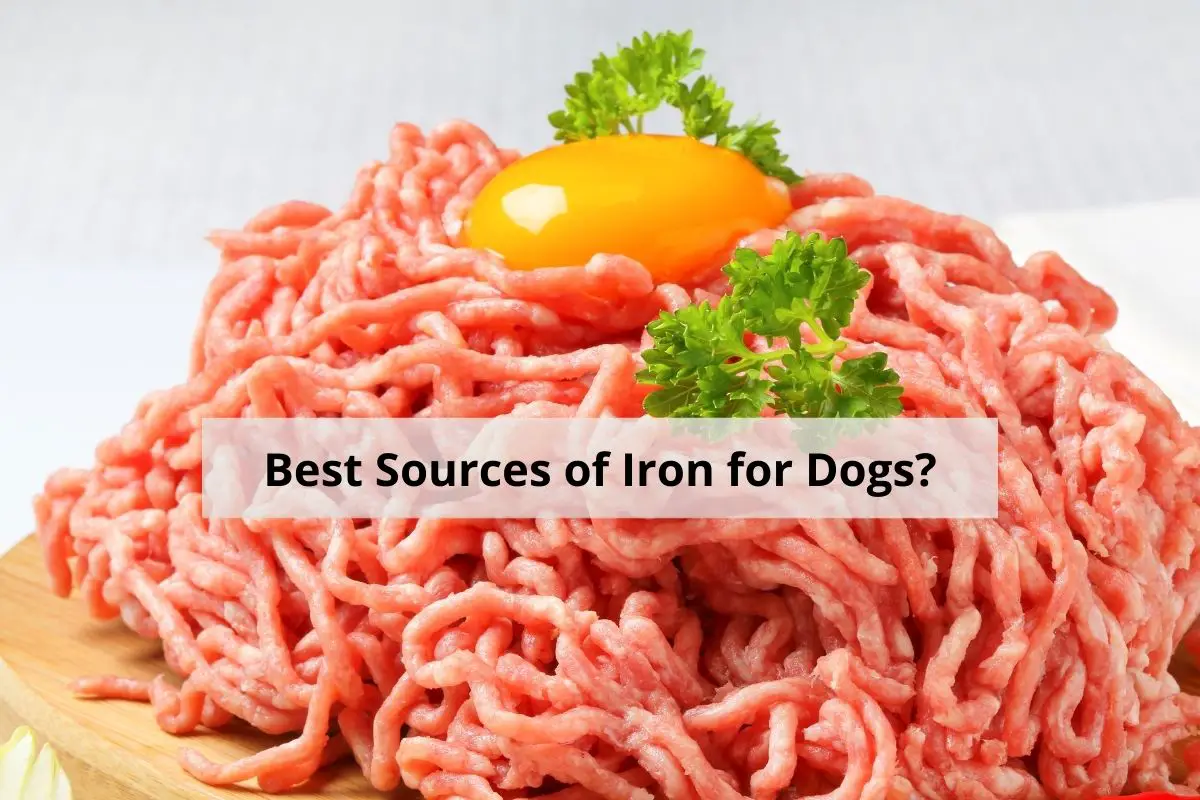This post contains affiliate links.
Cats have a reputation for being finicky eaters, but dogs don’t. Many people believe that a hungry dog will scarf down food now and realize later it didn’t pass the sniff test. Regardless of whether your pooch wolves down food or inspects each kibble, you want to know how to store his food safely.
To store dog food, you need to minimize oxygen and moisture exposure. Oxidation of dog food can lead to contamination and will degrade the nutrients. Once a bag of food is opened, it begins to oxidize. Store dog food away from heat and moisture, and limit oxygen exposure.
Dog food that is improperly stored will lose its nutritional value and can become rancid, leading to a sick dog. Read on as we explain what happens to food that is improperly stored, and the steps you should take to ensure your pet’s food is nutritious, safe, and tasty.
Table of Contents
Store in Original Bag
Ideally, you want to store food in the container it came with since the manufacturers designed these bags to keep dog food fresh until the buy by date. The bag also has the buy by date and the info needed if you must contact the manufacturer.
To minimize oxygen and moisture, always fold over the container after you have served the food. Most bag clips are too small for pet food bags, so you might be interested in these Horsetico 10.3-inch Bag Clips. These sturdy clips will work on small and medium-sized bags. For larger bags, you might want to get a Beach Towel Clip.
Use Metal Containers
Some people like storing food in containers. Although most people use plastic or rubber containers, there are some reasons you might want to use a metal one instead. Plastic containers are not ideal for storing food high in fats for several reasons:
- Taste – Over time foods in plastic containers begin to take on odors and flavors that make the food less tasty.
- Chemicals – Plastic can potentially contain harmful chemicals, although this is less of a concern with food-grade containers.
- Contamination – Oils from the food will collect on the plastic and in the scratches and nicks. This can lead to rancid or other contamination.
Finding plastic containers is relatively easy, but metal containers are harder to find. Here are several we recommend:
- Simplehuman 32-pound Pet Food Storage Container – Before you dismiss this as just another Simplehuman trash can, several features on this container make it ideal for storing dog food. These include an airtight seal, a lock-tight handle clamp, and built-in wheels. You won’t have to search for a scoop either, since a magnetic one comes with it.
- Park Life Wallace Treat Tin – If you want a smaller, stylish canister, Park Life makes an entire line of attractive lead-free steel pet food containers. They have an airtight silicone seal to keep food fresh, and their smaller size makes them perfect for those with small dogs.
- The Harry Barker Canister – If you want a larger, charming container, then check this one out. This canister is made from recycled food-safe, lead-free steel. The lids are airtight, lift off easily, but seal securely to avoid in-between meal feasts.
Don’t Pour Food Directly Into the Container
Ideally, you should keep the food in the bag, especially if you purchased a plastic container. However, if you bought something like the Gamma2 Vittles Outback Stackable container, then at least cut out the barcode or Best By from the bag and keep it. The Gamma2 is airtight, comes in 3 sizes, and is made with thick food-grade, BPA-free plastic.
Inspect and Maintain the Container
Before you use the container, make sure it doesn’t contain dents or scratches. Metal containers should be cleaned out occasionally. Hot water and soapy water should do the trick. A vinegar rinse should kill any remaining germs since moisture will spoil food. Dry the container before refilling it.
Don’t Mix Old and New
You might be tempted to pour a new bag into your canister before it is empty. Mixing old and new food means the old food will sit at the bottom and age even more. This increases the chance of rancid and contaminated food. If you must mix food, use the first-in, first-out method. Pour out the old food, clean out the container, and then pour the old kibbles on top of the fresh food.
Store in a Cool and Dry Space
Even sealed dog food will go bad more quickly if kept in hot temperatures. For that reason, you should not store food in the garage or any space in your house where temperatures could go above 100°F (38°C). Additionally, food kept in the garage is a temptation for critters that you don’t want in your garage.
Don’t Fill Your Food Dispenser
If you use a food dispenser, only add enough food that your pooch can eat in a couple of days. Keep the rest in the sealed bag and clean the container between fill-ups.
The Petkit Automatic Pet Feeder includes several features that will help keep dog food fresh. For starters, the dispenser uses a double-lock system to keep food fresher.
Also, a desiccant pocket inside the feeder allows you to control moisture better. Sohler Desiccant Drying Packets have many uses besides keeping food dry.
How Do Dog Food Manufacturers Preserve Dog Food?
Because the kibbles will have a shelf life of six months to a year, manufacturers do more than add preservatives to the food.
First, they remove most of the moisture since it leads to bacteria. One process used is air drying, which involves using hot and dry air to remove the moisture, sort of like a food dryer, except larger and faster.
Another is the boiled drying method. When food comes in contact with an extremely hot surface, the moisture is quickly evaporated. Manufacturers use one of these methods to reduce moisture to 10% or less.
Second, dog food manufacturers rely on their packaging to stabilize the food. Not only does the packaging keep moisture out, but it also needs to keep air from entering the bag. If they do not, the resulting oxidation can lead to mold or bacteria. It will also degrade the nutritional value of the food.
The packages that your dog food comes in have both exterior and interior barriers. The exterior coatings keep out water, oil, and gas. The interior barriers keep nutrients from leaching out. Also, the internal packaging contains antioxidants or preservatives to keep your dog’s food fresh.
What Kind of Preservatives Are Used in Dog Food?
Pet food manufacturers use a variety of antioxidants, or preservatives, to keep food from going bad. Whether an antioxidant is natural or synthetic, the pet food company is required to indicate the ingredient is being used as a preservative.
Synthetic Preservatives
Synthetic preservatives have gotten a rap, so much so that many manufacturers are phasing out their use. BHA and BHT are two related preservatives considered safe, but some studies suggest they can cause cancer in animals. Another preservative, TBHQ, has also been linked to cancer.
If manufacturers add those preservatives, they are required to list them. However, they are not required to list every preservative, especially if they didn’t add them. Ethoxyquin, another preservative that has been linked to potential health concerns, is often in pet food, but it won’t be listed as an ingredient. Why is that?
Pet food that contains fish meal most likely contains ethoxyquin. However, the compound is not being added as a preservative, which is why the AAFCO (Association of American Feed Control Officials) does not require manufacturers to list it. Instead, ethoxyquin is added to fish meal to keep it from catching on fire while being transported.
If the label on pet food lists fish meal, it most likely contains ethoxyquin.
Natural Preservatives
Manufacturers have switched to using less toxic, natural preservatives. Although these healthier antioxidants can provide numerous benefits, their shelf life is shorter. Here are some popular natural preservatives:
- Vitamins – Vitamins C and E provide nutritional benefits as well as preservative qualities. Vitamin C will sometimes be listed as ascorbic acid. Mixed tocopherols refer to Vitamin E.
- Extracts – The oil from rosemary is extracted and used as a preservative.
- Citric Acid – This acid is commonly used as a preservative in both human and animal food. Citric acid is made by fermenting crude sugars. If you see a product with blueberries, cranberries, or apples, they were likely added for the citric acid, not flavor.
If you are interested in high-quality kibbles with only natural preservatives, check out the following:
- Brother’s Complete Lamb Meal and Egg Formula – This 25-pound (11.3kg) bag of kibbles is grain and potato free, has no synthetic preservatives, and includes probiotics. The company is conscious of heat’s effects on preserving food and pledges that the bags are stored in temperature-controlled facilities.
- Orijen High Protein Dry Dog Food – This grain-free food features fresh, whole animal ingredients and includes natural preservatives like zinc, tocopherols, apples, and other fruits. Also, none of the meat is rendered. If you don’t want to buy 25 pounds at a time, Orijen sells several smaller bags.
- Instinct Natural Dry Dog Food – Another high-protein grain-free product, preservatives include rosemary extract, tomato pomace, apple cider vinegar, and blueberries.
What Happens to Dog Food That Is Past Its Expiration Date?
There is a lot of confusion around what expiration date and what a manufacturer is required to put on packaging. Packaging can have best by, sell by, or use by dates. Which of those refers to the expiration date?
- Best By – After this date, a product will still be safe to eat but won’t taste as good. Think of it as two-day-old bread. It’s still safe to eat but doesn’t taste as good as fresh bread.
- Use By – The manufacturer feels that after the use by date, the product will no longer be high-quality. For example, dog food will begin to lose flavor, and vitamins lose their full efficacy after this date. The product can still be safe to eat.
- Sell By – The date that manufacturers recommend a store pull the product off the shelf. This date is typically used with perishable products such as milk.
None of those terms tell a consumer the product has expired and is no longer safe to eat. So what does the date that you see on a can or bag of dog food tell you? Most pet manufacturers consider the date they stamp on their food products as a best by date.
Contrary to what most people think, there are no federal laws or regulations related to labeling when food has expired. Most states have laws regarding labeling some foods, but those laws are not consistent.
Tip: The FDA’s FoodKeeper App provides guidelines and suggestions on how long to store food. Although it does not have a category explicitly devoted to pet foods, it still provides information to help you decide if a food is good.
How to Tell if Dog Food Has Gone Bad?
Since the date on the dog food bag or can is not an expiration date, but a date at which the food quality will begin to lose its freshness, how can you tell that dog food should be thrown out? Tossing it after the best by date seems like a waste of food.
- First, you can follow the general guidelines. Bagged food can last for a year. Canned food has a shelf life of 3 to 5 years.
- Second, trust your senses. Food that looks off or smells different is likely to have gone bad. A can or pouch that is leaking or swollen should be tossed.
Reporting Food Problems
If food is spoiled, that is not yet past the best by date, or you find objects in it that do not belong, the FDA encourages consumers to contact both it and the manufacturer. Complaints about food can be made through the only Safety Reporting Portal. If you wish to speak to someone, call your state’s consumer complaint coordinator.
Have the UPC code handy and information about lot numbers. The FDA uses the lot number to determine where and when the food was made. You can find the lot number near the “Best By” date. On canned food, the lot number is typically on the bottom of the can, but sometimes it is on the label’s backside.
What Happens to Dog Food Once the Best by Date Is Past?
Even if the bag hasn’t been opened, dog food degrades as it ages. These are the key ways age hurts food:
- Rancid fat – Since bacteria cannot live in fat, it doesn’t spoil. However, chemical reactions occur in fat that causes it to become rancid. This can lead to an upset stomach or other digestive distress. Rancid fat also causes your body to lose Vitamins B and E, and it releases dangerous free radicals.
- Nutritional value decreases. – Vitamins, minerals, and other nutrients might not go bad, but they don’t last forever either. Vitamins A and C, for example, are water-soluble and begin to degrade when exposed to heat, oxygen, and light.
- Moisture and mold – Preservatives also lose their potency over time. This increases the likelihood of mold and bacteria growth.
As you can see, the longer food remains uneaten after the best by date, the greater the chances that it can lead to health risks. The digestive issues, such as indigestion, diarrhea, and vomiting are visible signs. Mold and bacteria can lead to botulism and salmonella. And a lack of nutrients can lead to malnutrition.
This does not mean you should throw out food once the best by date is passed. However, once it has, you need to be a little more attentive to the look and smell of food. Also, you might want to consider preserving the food, something we will discuss later.
Not All Fat Goes Rancid Quickly
Out of the three types of fats found in most dog foods, they oxidize at different rates based on how many carbon bonds they contain.
- Saturated – Fats found in products like beef contain no carbon bonds, so they are reasonably stable fats. Shortening is saturated fat.
- Monounsaturated – Like olive oil, many plant fats have a single carbon bond and are not as stable as saturated fats. Monounsaturated fats remain liquid at room temperature.
- Polyunsaturated fats – Because these fats contain several carbon bonds, they become rancid more quickly than the other two. Chicken fat is an example of polyunsaturated fat.
Remember, we are discussing which fats last the longest, not which ones are the healthiest. Polyunsaturated fats are considered far healthier, especially for humans. The fact that they oxidize quickly is not a big concern for humans.
A current trend in pet foods is the addition of fish oils to give dogs fats that are healthier. However, as they are the quickest to oxidize, you might want to avoid foods that contain fish oil, especially if you plan to store food for long periods.
The Best by Date Can Be Inaccurate
When you open a bag of dry dog food, the best by date becomes inaccurate. That is because the food becomes exposed to oxygen and moisture. As we discussed earlier, those two oxidize ingredients in your food.
In practical terms, this means that once you open the bag, you should ignore the best by date. For example, if you still have 9 months remaining on the best by date, it doesn’t mean the food will be good for months.
Use Dry Food Within Several Weeks of Opening
Recommendations for how food in opened bags should be consumed are all over the map. Some sources suggest two to three weeks, while others recommend no longer than six weeks. Factors that can affect how quickly food should be eaten include temperature, what kind of fats are used in the food, and how often it is exposed to oxygen.
Avoid Buying Food From Bulk Storage Bins
Even though you might save some money, bulk food is exposed to oxygen and moisture. Since those will speed up how quickly food goes bad, it’s best to avoid food from bins. Even if the employees tell you the food doesn’t stay for long unless you know they empty the bins and clean them before adding more food, buy dog food in sealed bags.
Can You Freeze Dog Food to Keep It Fresh?
Freezing dog food works the same as any other food. It keeps food longer. You probably do this with leftovers yourself to keep them from going bad. Vegetables and fruits are often flash-frozen to seal in their nutrients.
Not so fast, though. When you take the container from the freezer and pop off the lid, what do you find on top? More likely than not, you will find ice crystals. Freezers add moisture to foods, or more accurately, the moisture that is in the foods will wind up on the outside of the kibbles.
Use Storage Bags Designed for Frozen Food
If you plan on freezing pet food, there are two ways to go about this. The first is to pour small amounts of dog food into Ziploc bags. Once the kibbles are thawed, you want your pet to eat them in two or three days, so use appropriate-sized bags.
Guidelines for how long to store frozen food apply to dry dog food as well. Although, theoretically, frozen food can be stored indefinitely, the USDA recommends it be used within a year without going bad. However, food does not have to go bad to be unappetizing. Freezing dry food changes its texture, so your dog might frown his nose at the thawed-out kibbles.
Vacuum Seal the Food
A vacuum sealer will completely get rid of the oxygen, which will keep the kibbles fresh for longer. You will also avoid freezer burn and significantly reduce the chance of water collecting on the dry food.
If you already have a large freezer and vacuum seal food, then the products you use now should work. If not, then you should consider the type of sealer and how often you plan to seal.
- Automatic – An automatic sealer senses the bag and seals it.
- Semi-automatic – You control when the vacuum should seal the bag.
- Handheld – You get a portable machine but lose the ability to have the bag heat-sealed.
If you plan to seal large bags at once, then the automatic or semi-automatic models would be better suited to your purposes. A handheld model would be an excellent starter or if you plan to be infrequently sealing. The FoodSaver 111 is an excellent small model that fits in a kitchen drawer and seals quart-sized bags.
Related articles:
Can You Vacuum Seal Dry Dog Food? Can It Spoil?
How to Store Canned Dog Food
Canned dog food can be stored for several years in their original cans. The cans protect the food from oxidation. Theoretically, the food will last for years past the best by date; however, its quality will decrease over time. As long as you do not get in the habit of feeding your dog two- or three-year-old food, an occasional can past its prime should not be a problem.
Wet Food Storage Tips
Wet food that is not consumed within 2-3 hours should be stored in the refrigerator. Opened cans of food should be consumed within 3-5 days.
If you buy larger cans of wet dog food and you need to keep some in the refrigerator, you will get a better deal with dog food covers. Here are a few we recommend:
- OHSAY USA Food Can Covers – If your kitchen is already cluttered with lids, you will like these. Each cover fits 3, 3 ½, and 3 ¾ inch cans. The lids are BPA-free and top-rack dishwasher safe and get a bonus for being made in America by a vet-owned company. A pack will run you around $11.
- SACRONS 3 Pack Universal Silicone Food Can Lid Cover – This 3-pack is a less-expensive version of the same type of lids.
- Smarter Seal Food Can Lids/Covers – If you struggle with the thicker BPA-Silicon, the Smarter Seal 8-pack is made from #4 food-grade plastic. Like the other lids, they are dishwasher-safe and fit a variety of can sizes. The plastic lids are easier to get on and off cans. A bonus is that you can recycle them, which is not the case with Silicone lids.
Related articles:
Freezing Canned Dog Food
You can freeze opened canned food. Unlike kibble food, wet food has moisture, and its texture will not be impacted as much. However, do not freeze food in the container. Oxidation can cause some of the tin or aluminum to react with the food.
If you make raw food and plan to freeze it, you should continue using vacuum sealing. However, remember that freezing will prevent bacteria but won’t kill it.
Conclusion
Storing dog food is essential for keeping your pet healthy. Also, proper storage will preserve nutrients and flavor. Once you open a dry food bag, it begins to age rapidly, so methods that will keep excess air and moisture from oxidizing it are essential.
Sources
- The Dogington Post: How to Properly Store Your Dog’s Food
- Dog Food Advisor: These 6 Dogfood Preservatives Could be Toxic to Your Pet
- Dog Food Guru: Secret Natural Preservatives in Your Pet’s Food
- Made How: Pet Food
- Food Processing.com: Add Preservatives to the packaging, not the food
- Dogs Naturally Magazine: When to Throw Your Dog’s Kibble Away
- Consumer Reports: How to Tell Whether Expired Food is Safe to Eat
- U.S. FDA: Tips for Safe Handling of Pet Food and Treats
Mrdogfood.com is a participant in the Amazon Services LLC Associates Program, an affiliate advertising program designed to provide a means for sites to earn advertising fees by advertising and linking to Amazon.com. We also participate in other affiliate programs which compensate us for referring traffic.





